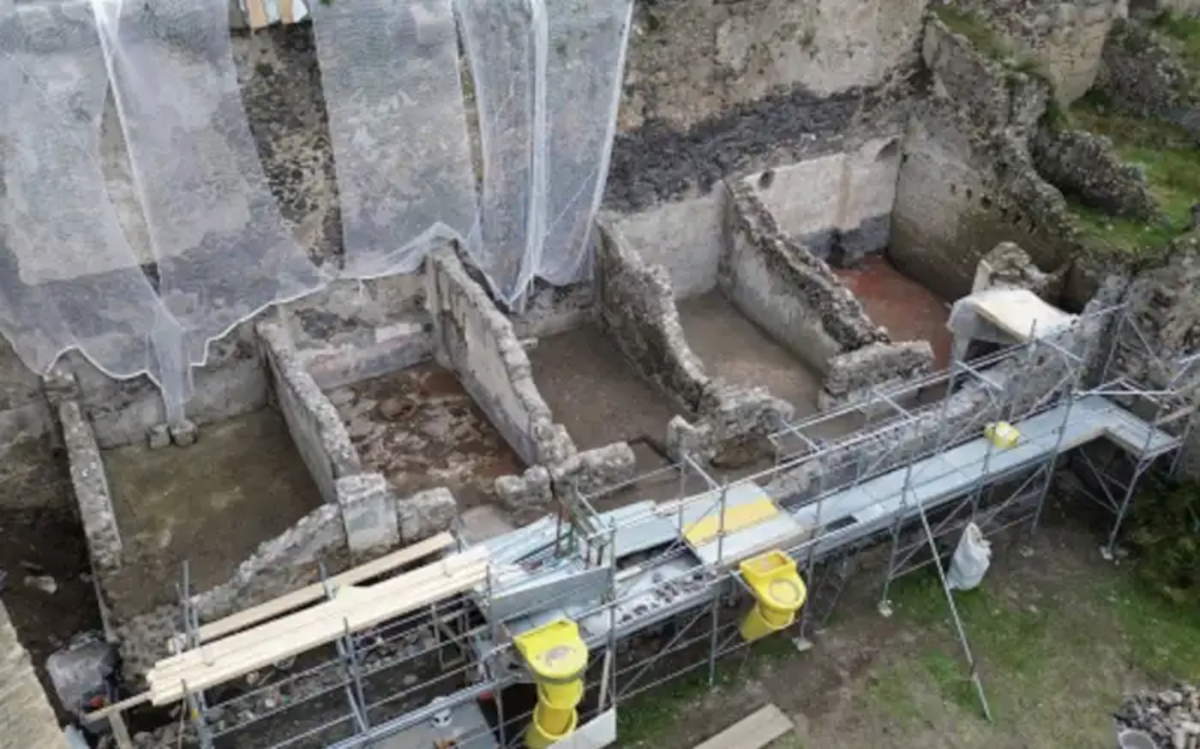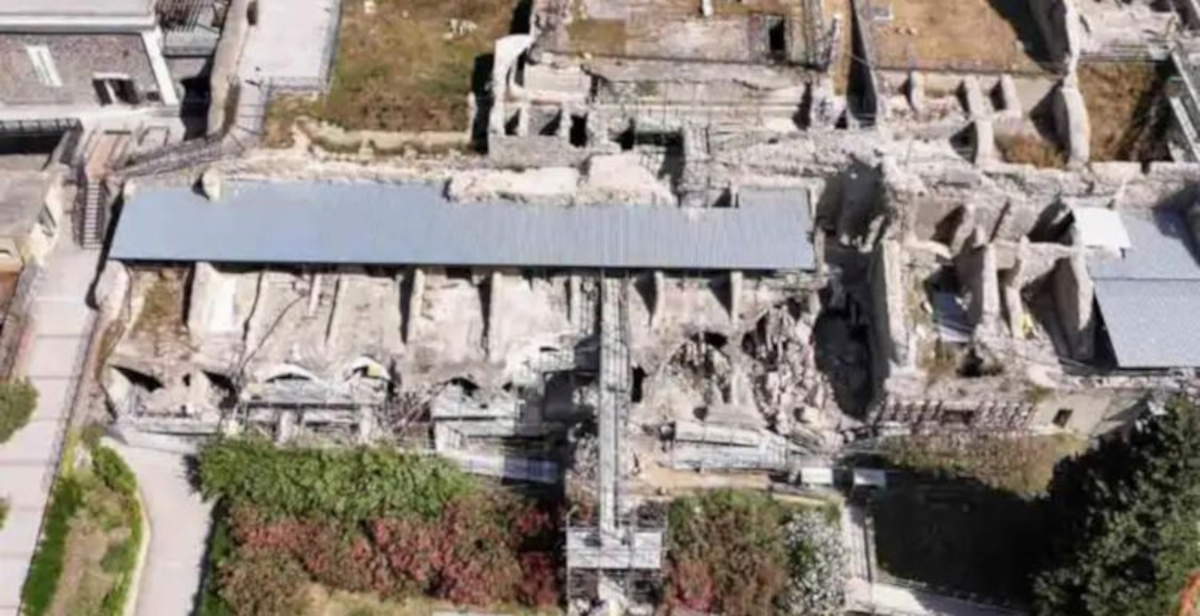During the earthquake swarm that affected the Phlegraean Fields area this morning, with tremors also felt distinctly in Naples and the Phlegraean hinterland and a maximum magnitude of 3.2, a partial collapse occurred inside thearchaeological area of Pompeii. The collapse affected a wall and a portion of a vault located in theinsula Meridionalis, an area of the ancient city already known to have suffered significant damage during the 1980 Irpinia earthquake. The structure in question had been shored up following that event and was currently undergoing restoration, which was still ongoing at the time of the incident.
This was announced by the Archaeological Park of Pompeii, which stressed the absence of injuries and pointed out that the area affected by the subsidence does not contain any frescoes or movable artifacts. The area was immediately secured to avoid further risks and all the necessary checks are already underway to understand the dynamics of the collapse and assess any remaining critical issues. According to Park technicians, it is not currently possible to establish with certainty a direct correlation between the seismic event recorded in the Phlegraean Fields and the subsidence that occurred in Pompeii: it could be a coincidence, but in-depth investigations by experts are underway to clarify every aspect.


“Pompeii is a fragile site and we are working on a sweep throughout the area to check for any damage as a result of this morning’s earthquake swarm in order to have as quickly as possible a complete picture,” said the site’s director, Gabriel Zuchtriegel.
This morning’s earthquake is part of a growing focus on seismic activity in the Phlegraean area, which has already been the subject of constant monitoring by the National Institute of Geophysics and Volcanology for months. Telluric phenomena, linked to bradyseism affecting the Pozzuoli and Solfatara area in particular, continue to raise concerns about the resilience of structures, including those of high historical and archaeological value, such as those in Pompeii. In response to the collapse, the archaeological park management immediately activated an extraordinary control protocol, which includes a thorough inspection of the entire area of the ancient Roman city. The checks involve not only internal staff but also a team of external experts, who were recently given the task of systematically monitoring the 13,000 rooms that make up the archaeological site on a regular basis.
The monitoring is done through a specially developed digital platform, which enables the collection and analysis of data on the state of conservation of the buildings, masonry, roofing and other structural and decorative components of the ancient city. It is a tool designed to ensure a planned and scientifically based approach to the maintenance of the site, whose extent and complexity require continuous and timely monitoring. The data collected are used to define priorities in routine and extraordinary maintenance interventions, with the aim of preventing structural risk situations as much as possible. In this context, the Park is also collaborating with the National Institute of Geophysics and Volcanology to carry out a broader assessment of the event, both in relation to its actual intensity in the Pompeii area and to identify any critical issues related to a possible interaction between seismic activity and structural vulnerability of archaeological artifacts. The combination of an ancient and delicate building heritage with the stresses resulting from natural events requires special attention on both a scientific and operational level.
The damaged structure had already been the subject of shoring following the 1980 earthquake, demonstrating the persistence over time of situations of vulnerability that require complex interventions, often slowed down by protection requirements and conservation constraints imposed by the nature of the site. The current restoration work in progress highlights how the area was already under observation and subject to work, but the seismic event accelerated a critical situation that has not yet been fully resolved. In the meantime, the entire archaeological area remains open to the public, but visitors do not have access to the area targeted by the collapse, which remains transennaded pending the completion of the verification and safety work. The Park has announced that it will continue with the extraordinary campaign of inspections and that any updates on the development of the situation will be disseminated promptly. The incident once again highlights the complexity of managing an archaeological site such as Pompeii, which, with its more than 60 excavated hectares, represents one of the most extensive and articulated contexts of world archaeology.
 |
| Pompeii, a wall collapses in the Insula Meridionalis during the Phlegraean Fields earthquake swarm |
Warning: the translation into English of the original Italian article was created using automatic tools. We undertake to review all articles, but we do not guarantee the total absence of inaccuracies in the translation due to the program. You can find the original by clicking on the ITA button. If you find any mistake,please contact us.